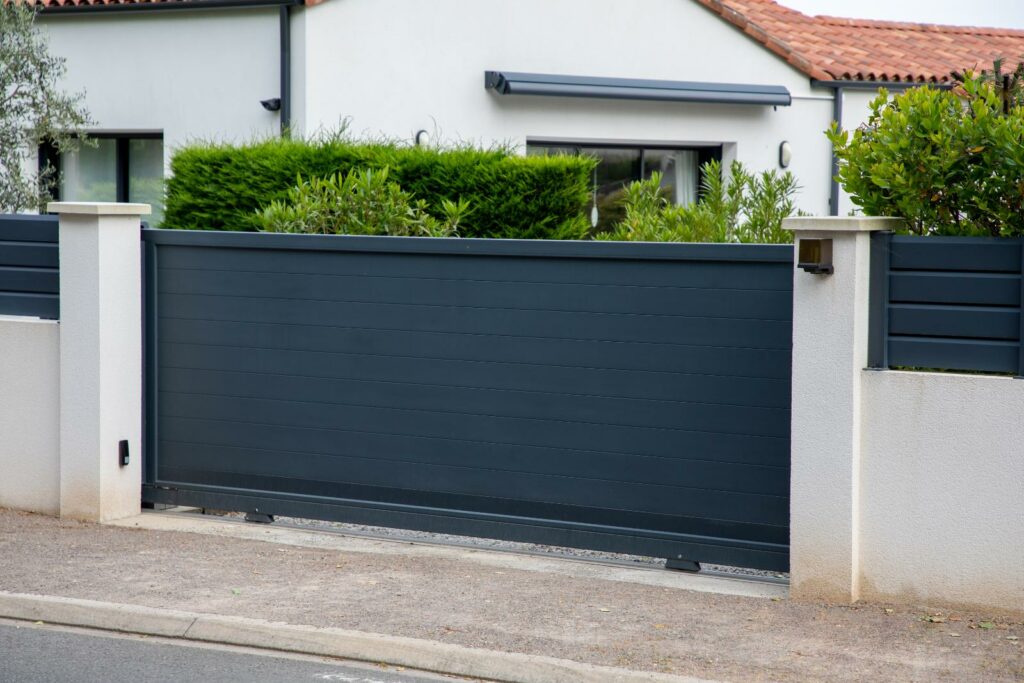
Contents
When it comes to metal building installation, the process can be a blend of precision and efficiency.
You might be surprised at how a few well-executed techniques can make all the difference in the final result.
From laying the groundwork to adding the finishing touches, mastering these steps can truly elevate the outcome of your project.
Understanding the nuances of each phase is key to ensuring a successful build that stands the test of time.
Key Takeaways
- Proper site preparation and foundation installation are crucial for the stability and longevity of a metal building.
- Precise alignment and secure fastening of frame components and structural support elements are essential for structural integrity.
- Attention to detail during roof installation, wall panel placement, and door/window framing ensures energy efficiency and weather resistance.
- Selecting high-quality insulation materials, incorporating vapor barriers, and finishing touches enhance the building’s thermal efficiency and aesthetics.
Site Preparation
Before commencing the metal building installation, ensure the site has been adequately cleared and leveled to facilitate a smooth construction process. Site preparation is crucial for the structural integrity and longevity of your metal building. To begin, soil testing must be conducted to assess the soil composition and characteristics of the site. This testing helps determine if the soil can support the weight of the building and identifies any necessary precautions to take during construction.
After soil testing, implement proper grading techniques to ensure the site is level and adequately drained. Grading involves shaping the land to the desired slope and contour, allowing for proper water runoff and preventing issues like flooding or erosion in the future. Utilizing grading techniques such as cut and fill or laser leveling will help create a stable foundation for your metal building.
Additionally, factors such as soil compaction should be considered to enhance the load-bearing capacity of the site. Compacting the soil increases its density, reducing the risk of settling or shifting after the building is erected. Proper soil compaction is essential for maintaining the structural stability of the metal building over time.
Foundation Installation
To ensure the stability and longevity of your metal building, the next critical step is to focus on the precise installation of its foundation following thorough site preparation. The foundation of your metal building is crucial as it provides the necessary support and stability for the entire structure. Proper foundation installation involves several key steps, such as soil testing, excavation, concrete pouring, and leveling.
Foundation Installation Process
| Steps | Description |
|---|---|
| Soil Testing | Conduct thorough soil tests to determine the composition and load-bearing capacity. |
| Excavation | Excavate the site to the required depth and dimensions for the foundation. |
| Concrete Pouring | Pour high-quality concrete into the excavated area to create a solid foundation base. |
| Leveling | Ensure the concrete is leveled and smoothed out to achieve a uniform surface. |
Soil testing is essential to understand the soil conditions and ensure the foundation can adequately support the metal building. Excavation must be precise to meet the structural requirements. When pouring concrete, use a high-quality mix to guarantee durability. Finally, leveling the foundation is crucial for the overall stability of the metal building. Following these steps meticulously will result in a strong and reliable foundation for your metal building.
Frame Assembly
When assembling the frame of a metal building, ensure that the structural support elements are correctly aligned to bear the intended loads.
Utilize fastening techniques such as bolts, screws, or welding to secure the frame components together effectively.
Perform quality control checks to verify the integrity and stability of the frame assembly before proceeding with further construction.
Structural Support Elements
Efficiently assemble the structural support elements of the metal building frame to ensure stability and durability.
To guarantee structural integrity, carefully position and secure the primary and secondary framing components. Start by connecting the main columns and rafters using high-strength bolts to maximize load-bearing capabilities. Ensure that all connections are properly aligned and tightened according to manufacturer specifications.
Next, integrate the purlins and girts within the frame, aligning them accurately to distribute loads evenly across the structure. Utilize bracing elements such as diagonal bracing and portal frames to enhance the frame’s stability against lateral forces.
Fastening Techniques
Using high-strength bolts, secure the primary and secondary framing components to ensure the stability and durability of the metal building frame. It is crucial to anchor bolts properly to the foundation to prevent any structural issues. Welding techniques can also be utilized to fasten certain parts securely. Below is a table outlining the key differences between anchor bolts and welding techniques:
| Fastening Method | Strength | Flexibility |
|---|---|---|
| Anchor Bolt | High strength | Some flexibility |
| Welding Techniques | Strong bond | Limited flexibility |
Quality Control Checks
To ensure the structural integrity of the metal building frame during assembly, meticulous quality control checks must be conducted, particularly focusing on the proper fastening of primary and secondary framing components.
Material Inspection: Verify the quality and specifications of all materials used in the frame assembly.
Installation Procedures: Follow manufacturer guidelines and best practices for correct installation.
Welding Techniques and Quality Assurance: Ensure welds are of high quality, free from defects, and meet industry standards for strength and durability.
Roof Installation
When installing the roof of a metal building, the selection of proper roofing materials is crucial for durability and weather resistance. The installation process involves a detailed overview of the steps to ensure a secure and watertight structure.
Pay close attention to the manufacturer’s guidelines for optimal installation results.
Roofing Materials Selection
Have you considered the durability and energy efficiency of the roofing materials for your metal building installation project? Selecting the right roofing materials is crucial for the long-term performance of your structure. Here are some key factors to keep in mind:
Material Durability: Opt for roofing materials that are known for their longevity and ability to withstand harsh weather conditions, ensuring the longevity of your metal building.
Cost Effectiveness: Balance the upfront cost of the roofing materials with their expected lifespan and maintenance requirements to ensure a cost-effective choice in the long run.
Energy Efficiency: Choose roofing materials that offer good insulation properties to enhance energy efficiency within your metal building while also contributing to cost savings in the long term.
Installation Process Overview
For efficient roof installation in your metal building project, precise alignment of roofing materials is crucial to ensure structural integrity and weather resistance. When installing the roof of a metal building, weather protection and safety precautions are paramount. By following proper techniques and guidelines, you can create a sturdy and durable roof that will shield your building from the elements effectively.
Roof Installation Tips:
| Step | Description | Importance |
|---|---|---|
| Preparing Surface | Clean the roof surface thoroughly. | Ensures adhesion |
| Installing Panels | Align panels correctly for stability. | Prevents leaks |
| Sealing Joints | Apply sealant to all panel connections. | Enhances weatherproofing |
| Fastening Panels | Secure panels according to guidelines. | Ensures structural integrity |
| Inspecting Roof | Check for any gaps or damage. | Prevents future issues |
Wall Panel Placement
To ensure proper alignment and stability, carefully position each wall panel according to the manufacturer’s specifications. Panel alignment is crucial for the overall integrity of the metal building structure. Here’s how you can ensure precise wall panel placement:
Preparation: Before placing the wall panels, make sure the framing is correctly aligned and securely in place. Check that all necessary openings for windows, doors, and other fixtures are accurately positioned to avoid any issues during panel installation.
Fastening: Utilize the recommended fastening methods provided by the manufacturer. Secure each wall panel firmly to the framing using the appropriate screws or bolts at the designated locations. This step is essential for the structural stability and longevity of the building.
Finishing Details: Pay close attention to finishing details such as corner connections and trim work. Properly aligning and finishing the edges and corners of the wall panels not only enhances the aesthetic appeal of the building but also provides additional weather resistance and insulation properties.
Door and Window Framing
After ensuring proper alignment and stability of the wall panels, the next critical step in the metal building installation process is framing the doors and windows with precision and accuracy. Door and window framing is essential not only for structural integrity but also for energy efficiency and aesthetic appeal. When framing doors and windows in a metal building, it’s crucial to pay attention to detail to ensure a tight seal and prevent air leakage.
To enhance energy efficiency, consider using insulated frames for doors and windows. These frames help in maintaining consistent internal temperatures, reducing heating and cooling costs in the long run. Additionally, installing double or triple-pane glass windows can further improve insulation and decrease energy consumption.
When it comes to design options, metal buildings offer a wide range of choices for door and window framing. From traditional to modern styles, you can select frames that complement the overall aesthetic of your building. Whether you prefer sliding doors, overhead doors, or large windows to allow natural light, there are various design options available to suit your preferences.
Insulation and Vapor Barrier
The installation of insulation and a vapor barrier in your metal building is crucial for maintaining thermal efficiency and preventing moisture infiltration. Proper insulation effectiveness ensures that your building stays warm in winter and cool in summer, while a vapor barrier prevents condensation and moisture buildup within the walls.
Here are three essential techniques to consider:
Choose the Right Insulation Material: Select insulation materials that offer high R-values to maximize thermal resistance. Common options include fiberglass, foam board, and spray foam insulation. Each material has its advantages, so consider factors like cost, installation ease, and long-term performance.
Install the Vapor Barrier Correctly: Proper installation of the vapor barrier is key to its effectiveness. Ensure that the barrier is placed on the warm side of the insulation to prevent moisture from penetrating the building envelope. Seal all seams and joints meticulously to create a continuous barrier.
Implement Moisture Prevention Techniques: In addition to the vapor barrier, incorporate moisture prevention techniques such as adequate ventilation, proper flashing around openings, and maintaining proper drainage around the building. These measures work in conjunction with insulation to safeguard your metal building against the damaging effects of moisture.
Finishing Touches
Maintaining the thermal efficiency and moisture protection of your metal building through insulation and vapor barrier installation sets the foundation for the final phase: Finishing Touches. As you approach this stage, it’s crucial to consider the decorative accents that not only enhance the aesthetics of your building but also provide additional protection against elements.
When it comes to decorative accents, options abound. Utilizing trims, gutters, and downspouts not only adds visual appeal but also aids in channeling water away from the building, preventing potential damage. Additionally, installing ridge caps and eave closures not only gives a polished look to your metal building but also helps in sealing off potential entry points for pests and moisture.
Protective coatings play a vital role in the longevity of your metal building. Applying a high-quality finish not only protects the metal from corrosion and UV rays but also allows for easier maintenance in the long run. Consider using coatings that offer both durability and aesthetics to ensure your building remains in top condition for years to come.
Wrap-Up
Following these ten best techniques for metal building installation will ensure a smooth and efficient construction process.
Proper site preparation, foundation installation, frame assembly, roof and wall installation, door and window framing, insulation, vapor barrier, and finishing touches are all crucial steps to achieve a sturdy and long-lasting metal building.
By carefully following each step with precision and attention to detail, you can successfully complete your metal building installation project with ease.
Recent Posts
5 Best Durable Metal Garages for Longevity
Imagine your garage as the backbone of your property, supporting everything from tools to vehicles,
3 Tips for Durable Metal Garages
Is it true that the longevity of your metal garages hinges on just a few
Why Choose Versatile Metal Options for Storage?
It’s interesting how you might find yourself needing a reliable storage solution just as you’re




